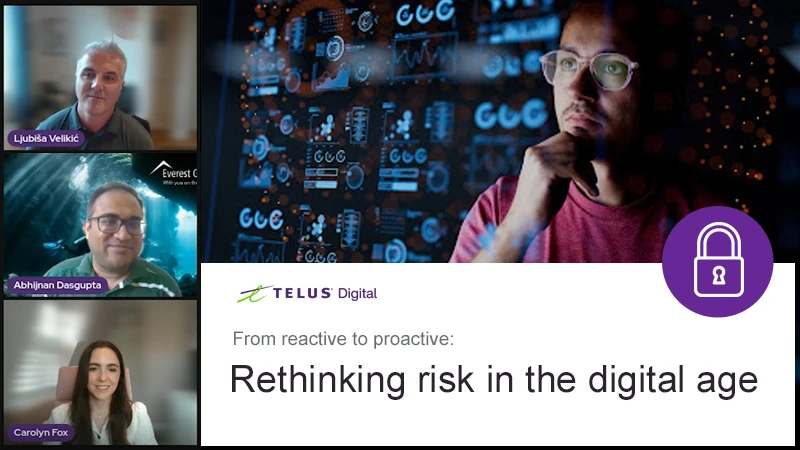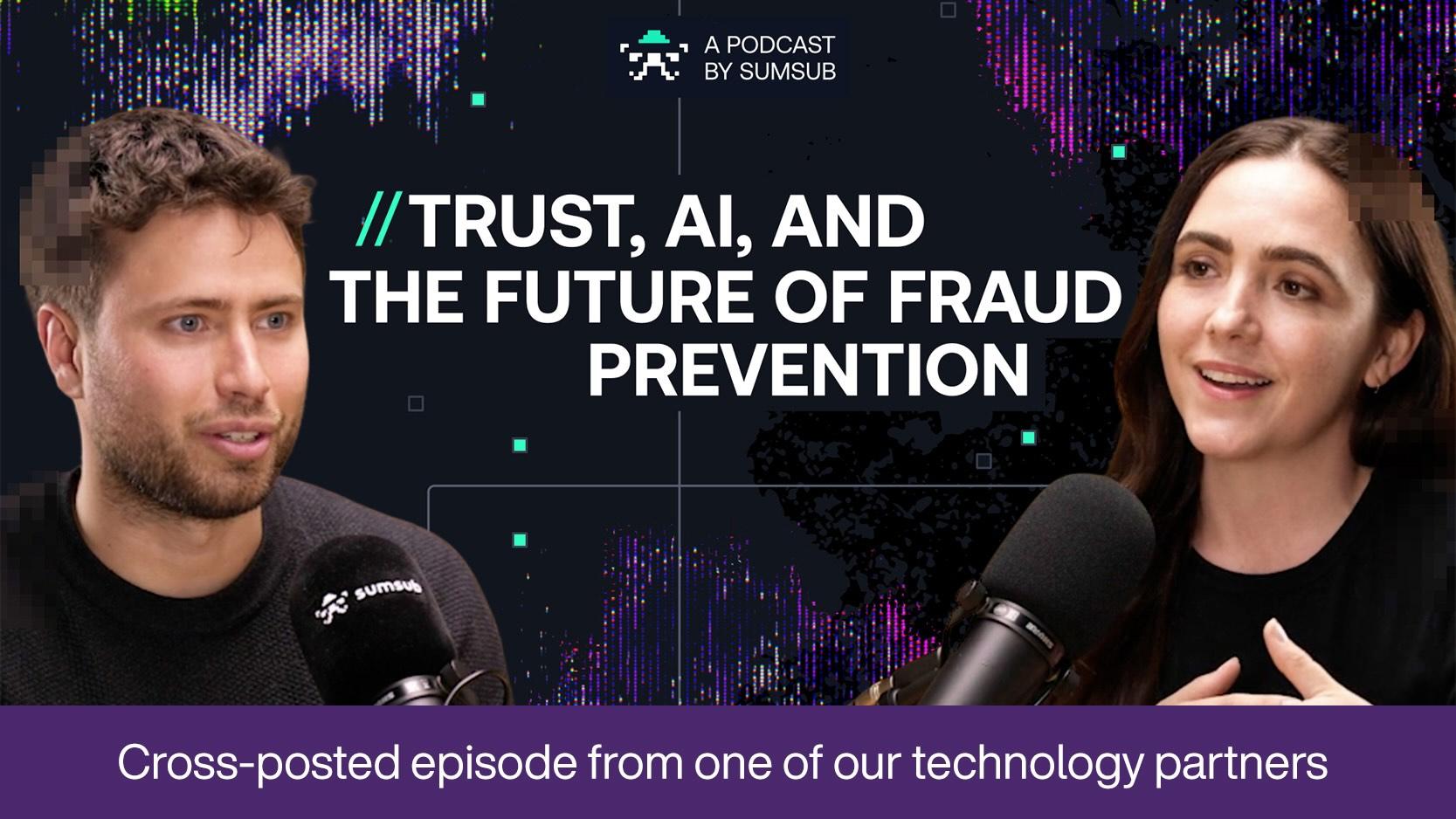How outsourcing helps brands overcome today’s top trust and safety challenges

Automated phishing attacks. AI-generated disinformation. Deepfake scams. The trust and safety threat landscape is shifting quickly and brands must keep pace. This is no easy task given a broader context of cost pressures, technical complexity and high demands for expertise.
Rising to today’s top trust and safety challenges requires sophisticated strategies and real knowledge and experience. Yet 39% of organizations cite a lack of human resources and technical expertise as a major challenge in maintaining safe and secure digital environments, according to TELUS Digital’s Safety in numbers report. Featuring survey results from 819 enterprise CX decision-makers across Western Europe, North America and Asia-Pacific, the report reveals why leading companies are increasingly turning to outsourcing partners to strengthen their defensive capabilities while optimizing costs.
Bringing in findings from the report, as well as insights from experienced trust and safety leaders, this article examines how organizations are overcoming today’s most pressing trust and safety challenges through strategic outsourcing partnerships.

Safety in numbers: Trust and safety trends, 2025
Explore trust and safety trends for 2025 from a survey of 819 enterprise leaders. Gain insights on fraud detection, KYC, content moderation and ID verification.
The stakes have never been higher
Today, a single trust and safety vulnerability can have far-reaching consequences.
For brands — beyond immediate financial losses from fraud, data breaches and compliance violations — incidents can have long-term damaging effects on reputation and customer retention. A gaming platform that doesn’t manage to prevent account takeovers, for example, could face a scenario where compromised accounts are used to scam other players through in-game transactions, ultimately leading to chargebacks, negative player experiences and damaged reputation. To offer another example, an ecommerce marketplace that fails to detect counterfeit products, thereby letting fake luxury goods flood their platform, may result in brand partner withdrawals, regulatory scrutiny and a permanent loss of consumer confidence in the authenticity of their offerings.
The pain isn’t felt just by brands, either. Data from the Federal Trade Commission shows that consumers lost over $12.5 billion to fraud alone in 2024, a 25% increase over the year prior. Besides the financial losses from fraud, trust and safety incidents can result in compromised personal data and a lasting erosion of trust in digital services that can affect their willingness to engage with online platforms.
Speaking of the current threat landscape on a recent episode of Questions for now, Peter Ryan, president and principal analyst at Ryan Strategic Advisory, emphasized the urgency of the situation: “These problems, these challenges, these obstacles, are only going to get worse, so the best defense is a good offense.”
But what does a “good offense” look like? Such an approach goes beyond risk mitigation, and involves proactively safeguarding customers and their data to inspire confidence. Ljubiša Velikić, vice president of trust and safety at TELUS Digital, who appeared on the same podcast episode, explained, “By prioritizing the work that trust and safety teams do and the programs that they put in place, you are working on enhancing your customer satisfaction, the loyalty of your customers, which are critical drivers of growth for many businesses. And we see that, with many of our clients, consumers increasingly look for brands that protect their privacy, safeguard their data and ensure a safe digital environment.”
Ljubiša Velikić, vice president of trust and safety at TELUS Digital, speaking about proactive trust and safety strategies on the Questions for now episode: “What trends are shaping trust and safety programs in 2025?”Top trust and safety challenges in 2025
While the need for robust trust and safety measures is clear, implementing effective solutions presents organizations with three distinct challenges: managing costs, navigating technical complexity and accessing necessary expertise. Let’s examine how outsourcing partnerships are helping enterprises overcome each of these obstacles.
1. Cost pressures impacting trust and safety programs
Cost emerged as the top challenge facing leaders delivering trust and safety programs, cited by 27% of respondents surveyed for the Safety in numbers report. To continuously adapt to emerging threats takes a combination of talent and tech, and neither are available for free.
With that said, the cost of an effective trust and safety program is outweighed by the cost of an ineffective one. This is true across financial crime prevention, compliance and content moderation. Financial losses, regulatory fines and reputational damage — often exceed the investment required for prevention. Underfunding can also cause burnout among staff struggling to manage the volume of items requiring human expertise and limit resources for proactive measures and innovation.
Peter Ryan, quoted in the Safety in numbers report, added, “Leaders are facing pressure to tighten budgets while keeping pace with evolving compliance standards. These challenges are making it harder to access the technical talent needed to deliver and maintain effective solutions.”
This highlights the real task at hand: safeguarding customers and company assets in a cost-effective manner.
How outsourcing helps brands overcome cost pressures
Strategic outsourcing partnerships can provide a path forward for brands looking to improve their trust and safety programs while optimizing their financial resources.
Outsourcing partners provide access to a scalable workforce, allowing organizations to adjust their trust and safety resources based on fluctuating needs. This flexibility means companies can ramp up during high-risk periods or new product launches without the long-term costs of full-time hires, helping prevent staff burnout by providing additional support during peak times. What’s more, outsourcing partners with a global presence can offer round-the-clock coverage and multilingual support more cost-effectively than most organizations can achieve in-house.
Shared technology investments provide another key benefit. Top trust and safety outsourcing providers invest heavily in cutting-edge technologies. This model enables individual organizations to benefit from state-of-the-art tools and AI-powered solutions without bearing the full burden of development, implementation and maintenance costs.
This combination of advantages transforms trust and safety from a fixed cost center into a more flexible, scalable and cost-efficient operation, putting brands in the best possible position to protect their customers and assets more effectively.
2. Technical complexity in trust and safety solutions
Technical complexity emerged as the second most significant challenge in delivering effective trust and safety programs, with 21% of respondents citing it as their primary concern. A further 20% specifically highlighted difficulties with integrating solutions into existing systems and architecture. Considered together, that’s 41% of the respondents, and a clear indication of the growing sophistication required to combat evolving threats while maintaining seamless user experiences.
The challenge goes beyond simply implementing new technologies, which can be costly. Often, organizations must integrate complex solutions with legacy systems, manage multiple tools across different functions and ensure their technology stack can adapt to emerging threats. “Product teams often operate in silos [...] responding to safety issues as they’re happening on the platform rather than thinking about them ahead,” explained Carolyn Fox, director of trust and safety at TELUS Digital on a recent webinar. This reactive approach often leads to rushed implementations and fragmented solutions that create additional technical debt.
The complexity is further compounded by the rapid pace of technological change. According to the Safety in numbers report, 32% of organizations struggle to keep up with technological advancements due to budget constraints. This gap between available solutions and implementation capabilities leaves many organizations vulnerable to emerging threats.
How outsourcing helps brands overcome technical complexity
Outsourcing partners bring proven technical knowledge, robust technology partner networks and integration expertise, empowering organizations to implement sophisticated solutions without the complexity of building and maintaining them in-house. These outsourcing partners continuously invest in updating their technology to address emerging threats, ensuring their clients benefit from the latest advances in trust and safety solutions. As Fox explained, “We’re able to offer some of our own plug-and-play software solutions so that companies can focus on doing what they do best, which is building amazing products for their customers.”
Beyond technology itself, leading outsourcing providers offer expertise in implementation and optimization. They bring “cross-vertical experience” from multiple implementations across different industries, helping organizations avoid common pitfalls and ensure smooth integration with existing systems. This comprehensive approach transforms technical complexity from a barrier into a strategic advantage, as those with proficient partners are better equipped to efficiently stay on top of threats, while those without such partners may expend greater resources managing their programs in-house.

From reactive to proactive: Rethinking risk in the digital age
Join trust and safety experts from TELUS Digital and Everest Group for a discussion on how enterprises can update their risk management strategies to stay ahead of evolving threats.
3. Expertise gap in trust and safety programs
The expertise gap stands out as a critical challenge in trust and safety management, with the Safety in numbers report finding that 16% of organizations have a lack of internal expertise and another 10% have difficulties understanding and following regulations. The high demand for experience and expertise has created an evident vulnerability: 44% of respondents struggle to maintain compliance with government regulations and industry standards. With the high cost of noncompliance, both in terms of fines and consumer confidence, this is a problem in need of prioritization.
The challenge is multifaceted. Trust and safety demands a unique blend of technical knowledge, regulatory understanding and industry-specific insights. As threats evolve and regulations change, the expertise required to manage these risks effectively becomes increasingly specialized and difficult to cultivate in-house. Peter Ryan stated, “These challenges are making it harder to access the technical talent needed to deliver and maintain effective solutions.”
Moreover, the global nature of digital platforms requires expertise that spans different cultural contexts and regional regulations. This global dimension adds another layer of complexity to an already challenging field.
How outsourcing helps brands overcome the expertise gap
Strategic outsourcing partnerships offer a solution to this expertise challenge, providing access to specialized talent and proven expertise that would be difficult and costly to develop internally.
Outsourcing partners bring a wealth of experience gained from working across multiple industries and geographies. In the From reactive to proactive: Rethinking risk in the digital age webinar, Velikić mentioned, “Something that is often overlooked is the expertise that our operational leaders and frontline build over the years by working across many clients and different verticals in trust and safety is really immense across moderation, across account security, financial crime and compliance.”
This cross-industry experience allows outsourcing partners to offer global coverage with deep local insights. As Velikić went on to explain, “A lot of the clients we work with are global clients, however, it is difficult for them to scale teams globally in many regions in many countries and that's where we can help. They may need folks who understand cultural context in certain markets where we can help quickly hire and train people that will provide value to our clients in that way.”
Furthermore, leading outsourcing providers prioritize continuous learning and adaptation, ensuring their teams stay ahead of emerging threats and regulatory changes. This ongoing investment in expertise and training enables client organizations to benefit from up-to-date knowledge without the burden of managing extensive internal training programs.
Overcome trust and safety challenges with the help of TELUS Digital
As digital threats continue to evolve in complexity and scale, organizations need partners who can help them stay ahead. TELUS Digital brings unique strengths to contain costs and safeguard what’s most important, with global operations and highly-engaged team members providing truly global coverage.
“The future really is tech-enabled, human-centric. And that’s where we play, where we invest in nurturing and in further development,” added Velikić.
Don't wait for the next threat to expose vulnerabilities in your system. Contact us today to discover how our tailored solutions can help you build a more resilient, efficient trust and safety program while optimizing costs.




